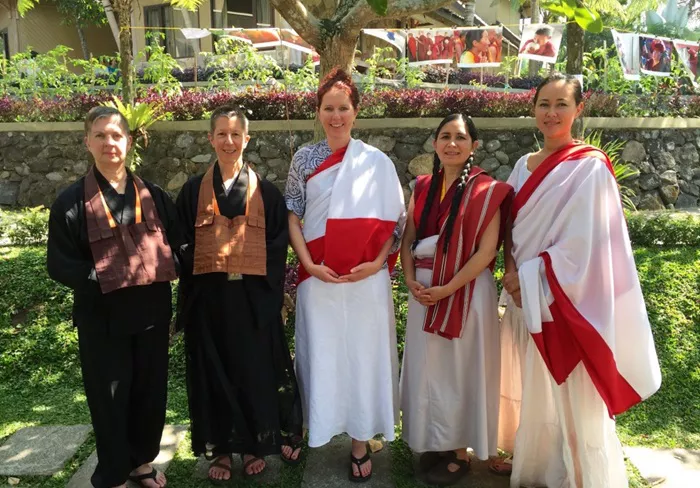For centuries, Buddhist women have quietly served, learned and led in the margins, little known and often ignored. That is starting to change.
This week, more than 350 delegates from 25 countries attended the 19th Sakyadhita International Buddhist Women’s Conference. The conference was held at the Waterfront Hotel in Kuching from June 16 to 20.
The five-day conference brought together monks, scholars, lay people and activists under the theme “Leading Change: The Transformation of Buddhist Women” to explore how Buddhist women from different traditions can adapt to modern realities.
Founded in 1987, Sakyadhita International Buddhist Women’s Association has grown into a global network advocating for gender equality in Buddhist practice and scholarship.
At the heart of this year’s conference was its founder, Karma Lekshe Tsomo, a Buddhist nun and scholar known for her decades of commitment to women’s ordination and education.
Its president, Dr Sharon Soh, is a professor of religious studies whose research interests include trauma, embodiment and socially engaged Buddhism.
In an interview with Sarawak Tribune, they shared why the conference was chosen to be held in Sarawak, how Buddhist women are coping with change, and their hope that the conference will inspire not only Malaysia but the world.
Sarawak Tribune: Why did you choose Sarawak to host this international conference?
Chomo and Su: This is the second time the conference has been held in Malaysia. The first was in Kuala Lumpur in 2006, when participants contributed to two publications in Chinese and English.
When Sarawak extended the invitation, we saw it as an opportunity to expand our influence and focus on a region that global attendees might not know as well.
The idea is not always to return to the big cities, but to bring the event to a more diverse region. Sarawak, with its rich cultural heritage and harmonious religious atmosphere, made a very meaningful choice.
I (Chomo) still remember the Buddha’s Birthday celebrations in Kuching about ten years ago. The scale of public participation was impressive, with float parades, chanting and parades throughout the city.
There is a vibrant Buddhist life, practice and celebration here that is worth learning from the international community.
Sarawak also carries a valuable message of a multicultural and multi-religious society. Here, Buddhists, Muslims, Christians and indigenous communities coexist with mutual respect.
This harmonious coexistence provides a model worth emulating for many other countries, especially those facing division or polarization.
What changes are Buddhist women experiencing today?
The concept of “transformation” touches almost every aspect of life. In many Buddhist cultures, teachings were traditionally passed down in classical languages such as Pali or Sanskrit.
Today, the younger generation often does not understand these languages, so there is a need to translate these teachings into modern, accessible languages. This includes not only English, but also finding ways to directly explore the issues that young people face in their daily lives.
In addition, there has been a transformation in institutions. For centuries, the monastic system has been dominated by men. Women have participated, but their contributions are often not recognized. In many places, girls are excluded from the educational pathways that are easily accessible to young monks.
Due to the lack of opportunities to receive Buddhist education, few girls join. But when nunneries began to provide education, thousands of women stepped forward. This shift is rapidly becoming apparent. In countries like China, female monks are given equal learning opportunities and the number of ordained monks has increased significantly.
Generational change is another ongoing shift. Today’s young generation faces increasing stress, pressure and alienation.
Many young people, especially in urban environments, live with constant anxiety, and Buddhist teachings provide tools to cope with these mental and emotional challenges. At the same time, teaching these tools requires adaptation.
The current generation communicates through social media, short content and rapid conversations. Buddhist teachers need to connect with them based on their specific context. This means not only leveraging digital platforms but also empowering young teachers to become cultural bridges.
Who are the attendees? How is the conference organized to serve such a diverse audience?
The Kuching conference will have over 350 attendees, of which over 300 are from overseas and over 50 are from Malaysia.
The delegates come from 35 different countries, most of them from Asia due to the ease of transportation. Some delegates even took three flights and took more than 24 hours to arrive.
The conference aims to balance academic, spiritual and cultural dimensions. Each day will begin with a meditation session, including a special session called “World Meditation,” in which participants will chant

